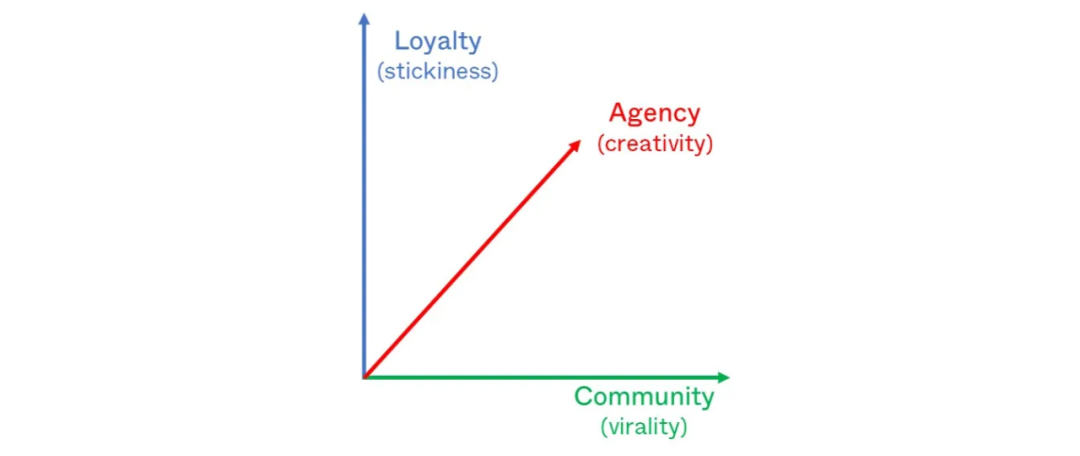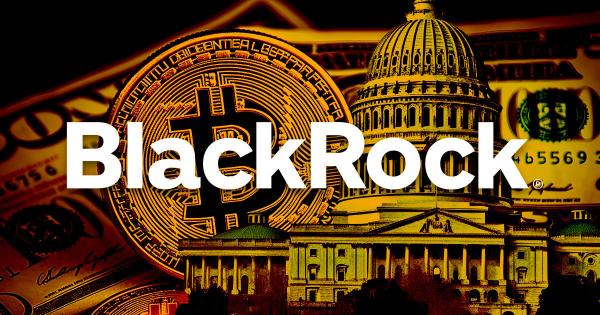Community First Building Sustainable Power for Web3 Growth
Community-driven sustainable growth for Web3Author: DocTom
Translator: Sissi
Translator’s Note:
In the Web3 era, blockchain technology has deconstructed the traditional form of communities and reshaped them into an open, fluid, and interconnected new ecosystem. In this ecosystem, individual autonomy and collective consensus are equally important, and decentralization and token mechanisms activate the intrinsic motivation of the community. Users not only have autonomy but also actively participate in the co-construction and sharing of value, establishing common goals and consensus that go beyond individual interests.
- Popular Science What is the stateless that Vitalik has frequently mentioned in recent speeches? What does it mean for the decentralization of Ethereum?
- An Overview of Mainstream Cryptocurrency Exchange Account Password Leakage Data and Security Mechanism Analysis
- Blockchain Game of ERC-6551 Use Case
In Web3, “community first” has become a new paradigm for protocol/project growth, which means first gathering participants who share common values, establishing consensus among them, developing a highly active and cohesive community, then designing products collaboratively within the community, and achieving rapid and sustainable business growth through community-driven dissemination.
Prioritizing the fit between the community-market and community-product is crucial before achieving product-market fit.

A community-first approach (Go-to-Community) can be an extremely effective initial stage for market promotion (Go-to-Market) strategy and may even completely replace traditional marketing strategies, especially in the context of decentralization and Web3, where the community has become a critical foundation and driving force.
Building a community during the product development process and actively interacting with early members can provide valuable feedback, validation, and social validation for ideas, propositions, and products. Having an active and engaged community can help drive network effects and viral dissemination, which in turn drives the growth flywheel through community-driven acquisition, participation, and retention.
By making community participation a key part of the go-to-market strategy, it can:
- Obtain early feedback and validation from potential users
- Establish trust and credibility with early adopters
- Create a sense of ownership and commitment to the project and product among community members
- Drive user acquisition, participation, and retention through community network effects and viral dissemination
The key difference between marketing strategies and community-first strategies can be summarized as the difference between value capture and value creation.
Community ≠ Marketing: Why we prioritize “going to the community” rather than just “going to the market”

>>Created by the community, for the community
Firstly, community building is a mindset. It is a way of establishing relationships and facilitating interactions among a group of people with shared interests, goals, or values. It helps foster a sense of belonging and ownership among community members, thereby promoting more participation, retention, and growth. This requires sincerity, empathy, inclusiveness, and collaboration, placing the needs, interests, and goals of the community above individual interests:
- Authenticity: Take a people-oriented approach and maintain authenticity, transparency, and honesty in all interactions with the community.
- Empathy: Understand and resonate with the community’s viewpoints, pain points, and needs through active listening.
- Inclusivity: Create a welcoming and inclusive environment for all members of the community, viewing diversity and co-creation as key driving forces.
- Collaboration: Collaborate with the community to co-create solutions and establish a shared vision for the future.
- Long-term Vision: View community building as an ongoing process rather than a one-time task, constantly collecting feedback and iterating and improving based on the evolving needs of the community.
>>Minimum Viable Community (MVC)
Similar to applying lean methods to product development, developing and building a community can benefit from starting with a minimum viable product (MVP) and iterating around it to test acceptance and fit. Minimum Viable Community refers to the minimum level of interaction and support plan for a community, gathering a small group of core members around a common goal and finding value and belonging in the established content.
MVC is an excellent way to test if the objectives resonate with early community members and identify which factors provide the most value. Starting on a small scale before scaling up helps focus on building relationships and mutual understanding within the core team.
This approach is also lower risk as it gives you the freedom to experiment and test without dealing with a large-scale community, complex tools, and processes. Starting on a small scale allows sincerity and trust to naturally build, which becomes an important foundation for understanding the desires, needs, and problems of members. In turn, these experiences can be used to continuously optimize your community goals and scope, as well as the values and culture being shaped.
Starting on a small scale means truly understanding people’s needs, preferences, and challenges. It means incorporating these understandings into the community’s development and the conversations created together. Starting on a small scale also allows you to pay more attention to the culture you are shaping through your own actions and the behavior of those invited into the community.
“Building a Minimum Viable Community (MVC) Guide” (rosie.land)
A minimum viable community (MVC) can be formed with just 10 to 20 committed contributors or participants. However, it is crucial to identify and recruit an initial core team of early members and contributors to ensure there is enough common foundation and consensus around your high-level goals, or your “why”. Influencers, thought leaders, core users, or super fans are excellent candidates to invite into your community. They often share the same passion and values as you, have demonstrated commitment, and are willing to invest time and energy in the initial stages of community formation and standardization. Additionally, these “influential” member types are often seen as social leaders who can help guide their followers to join once the community is ready, triggering user acquisition and a continuously growing network effect cycle.

>>Community-Member Fit & Community-Market Fit
When building a Minimum Viable Community (MVC), it is crucial to focus on finding community members who are a good fit for a small group of believers. By starting to build a community with people who are most likely to make meaningful contributions, you can establish a solid and cohesive foundation for community development and cohesion. Community-Member Fit refers to the initial core team consistently providing meaningful value to each other without being asked.
Signs of a high Community-Member Fit include:
-
Members regularly returning without reminders
-
Spontaneous interactions occurring without intervention
-
Members voluntarily adhering to community rules and guidelines
-
Members organizing activities on their own
-
Members actively recruiting other members
-
Harmonious community atmosphere
-
Members providing feedback voluntarily
Community-Member Fit Score (CMFS) (substack.com)
On the other hand, Community-Market Fit means that you have built a community that is more than just a gathering place for a small group of believers. If your community meets the needs of enough people and is able to develop on its own, it means that your community is something people need. This is because your community provides a sense of belonging and fulfills a demand for a real part of the market. At this point, your community is attractive enough to attract new members and retain them.
How do you determine if you have built a community that people want?
-
You have established a core and stable team of superusers and contributors
-
The initial members are active enough to continuously attract and integrate new members into the core of the community
-
The community grows organically through member referrals, community spread, and network effects
-
Interactions between members increase, gradually taking over participation and management responsibilities, relieving the burden on the initial community leaders and managers
-
There is a strong retention rate among new members, and there is enough Fear of Missing Out (FOMO) among new members

>>Community-Product Fit & Minimum Viable Product (MVP)
Building a Minimum Viable Community and achieving Community-Market Fit are important steps in delivering a Minimum Viable Product (MVP). This helps you collect feedback and validate your product idea before investing a significant amount of time and resources. Community-driven product development combines decision-making speed with a customer-centric development approach. Finding product-market fit becomes easier when the market keeps telling you what it needs.
The alignment between the community and the product is achieved through the feedback from the community, using a method of rapid experimentation and validation, much like building a product with toy blocks. This method is a “community-driven” approach, which means that community members participate in the production and decision-making of the product. Discussions and content within the community reveal their needs and concerns, as well as the product features they appreciate and find troublesome. This approach ensures that the product meets the needs of the target community and is more likely to be accepted and used by them. By establishing a community of early supporters who are enthusiastic about your product goals, you can ensure that the product you create together meets their needs, and they are more willing to use and promote the product.
For startups building a Minimum Viable Community (MVC), it is important to first tell the story of what they plan to build, share their vision with people on the internet, invite them to join the creative process in the Discord community, give them incentives to help realize this vision (could be tokens or other means), provide them with a platform to share ideas, listen to others’ opinions, and then turn this vision into reality.
The community is crucial for scaling your Minimum Viable Product (MVP): This is the reason (Future)
>> Community-driven growth & Product-Market Fit (PMF)
When promoting a product or service, building a strong community and market fit is essential. This helps ensure that the product or service is well-received within the community, making it easier to expand to other users with similar needs and desires. Additionally, having a community that has already interacted positively with your product and trusts your company is a valuable resource for business expansion. They are more likely to become early adopters and advocates, helping you extend your influence and reach more potential customers.
Therefore, building community fit (market and product) can provide a strong foundation for early adoption, product validation, and social validation, generating network effects that drive growth through continuous user acquisition, engagement, and retention.
Having an active and engaged community can provide social validation for your product, making it more appealing to potential users. As more people join your community, it becomes a powerful marketing tool that helps attract new users and members. Additionally, by continuously interacting with your community and iterating the product based on their feedback, you can cultivate a sense of ownership and investment in the product among your early community members, turning them into evangelists once the MVP is launched. In this way, the community becomes a new barrier and a powerful force for driving growth and establishing strong product-market fit.
Ultimately, by encouraging and incentivizing active participation and co-creation from community members, a community-driven enterprise has the potential to activate growth beyond just user acquisition, loyalty, and network effects. When community members feel ownership and the incentivization mechanism aligns them with opportunities for value creation, brand value will continue to rise through the active participation and co-creation of a diverse and loyal community.

>>A New Marketing and Growth Framework
It combines the community-first (GTC) approach with the lean method of multiple validation stages, fundamentally changing the traditional way of marketing. It is no longer just about building products and attracting audiences through a series of acquisition-activation-retention stages.
Instead, adopting the GTC approach provides you with a new growth framework, called the “ACP Funnel,” to identify the development trends of the product. This framework helps to better understand and apply this new method.
-
Audience: Attract people to immerse themselves in the story you tell
-
Community: Create a space where people who love your story and identify with your brand gather
-
Product: Provide a product for your community to help them achieve their goals and improve their own story
In short, putting the community first means starting small, inviting a group of early believers, understanding their desires, and creating a story that resonates with them. By using their feedback and validation, you create a product that meets their needs and solves their problems, establishing not only product-market fit but also social validation. By considering the fit between the community and the market before considering product-market fit, you can leverage a loyal team of advocates and evangelists to help you grow and expand faster and more sustainably, which is crucial.
Original Article: Finding fit in a community-first (web3) world
Cover Image: Unsplash@zak
Original Article Links:
1/https://future.com/community-%E2%89%A0-marketing-why-we-need-go-to-community-not-just-go-to-market/
2/https://blog.cryptostars.is/communities-and-daos-need-stewards-5bc19dd7ac56
3/https://www.amazon.com/Lean-Product-Playbook-Innovate-Products/dp/1118960874
4/https://www.commsor.com/post/minimum-viable-community
5/https://rosie.land/posts/a-guide-to-minimum-viable-community-mvc/
6/https://medium.com/bosonprotocol/web3-network-effects-leveraging-power-users-8777f6583258
7/https://davidspinks.substack.com/p/the-community-member-fit-score-cmfs
8/https://www.commsor.com/post/what-is-community-market-fit
9/https://www.mindtheproduct.com/why-community-led-product-development-is-the-new-go-to-market/
10/https://unita.co/blog/minimum-viable-community/
11/https://latecheckout.substack.com/p/the-framework-to-find-traction-for
We will continue to update Blocking; if you have any questions or suggestions, please contact us!
Was this article helpful?
93 out of 132 found this helpful
Related articles
- Exclusive Interview with Web3Brand How do AI and Web3 achieve mutual development in the wave of technological advancement?
- a16z Zero-knowledge proofs are just a magic trick
- Stanford Blockchain Week Highlights MEV, L2, ZKP, On-chain Order Book…
- Visa Deep Dive into the High-Performance Blockchain Network Solana, Why is it the Choice for Visa Payments and Stablecoin Settlement?
- Principles, Current Applications, and Risk Mitigation of Intent
- Excitement in the NFT Winter Doodles Releases Limited Edition Holed Shoes, Sold Out in 72 Hours
- Analyzing the potential risks of the TG BOT track from a domestic legal perspective






